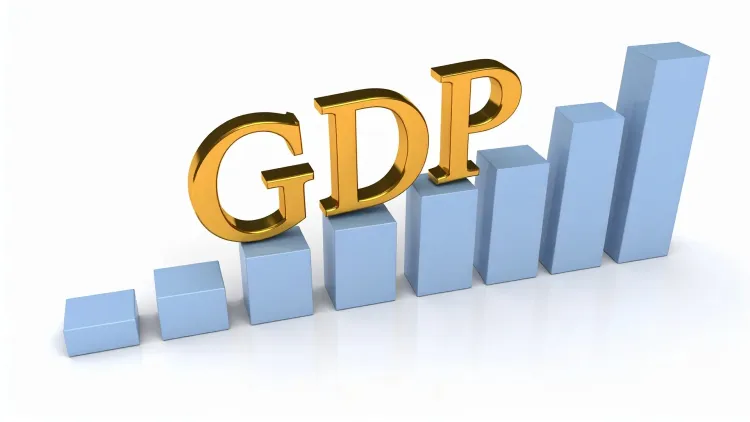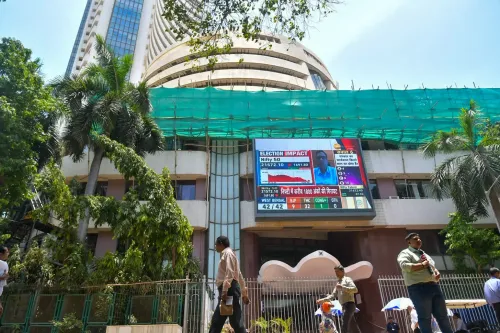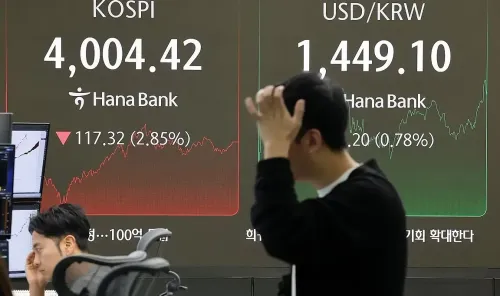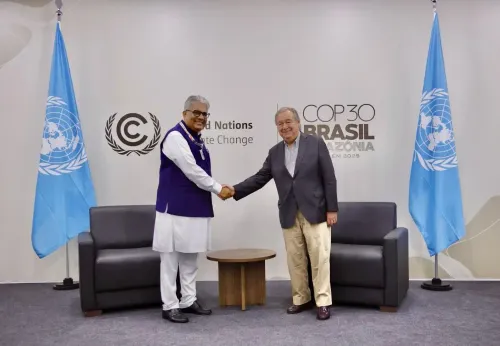Will RBI Continue to Forecast India's GDP Growth at 6.5% for FY 2025-26?

Synopsis
Key Takeaways
- GDP growth forecast: Retained at 6.5% for FY 2025-26.
- Strong rural demand: Supported by favorable monsoon conditions.
- Government spending: Significant investment in infrastructure projects.
- External demand risks: Ongoing geopolitical tensions and trade negotiations.
- Sector performance: Services and construction sectors remain robust.
Mumbai, Aug 6 (NationPress) The RBI has maintained its projection for India's GDP growth at 6.5 percent for the fiscal year 2025-26, despite facing global uncertainties. The central bank is optimistic due to strong rural demand driven by favorable monsoon conditions and substantial government investment in major infrastructure projects, which are expected to stimulate growth.
The RBI Governor, Sanjay Malhotra, stated, “The above-normal southwest monsoon, lower inflation rates, increasing capacity utilization, and favorable financial conditions are continuing to support domestic economic activities. Furthermore, supportive monetary, regulatory, and fiscal policies, along with significant government capital expenditure, should enhance demand. The services sector is predicted to remain vibrant, with ongoing growth in construction and trade in the upcoming months.”
“Considering all these elements, the real GDP growth forecast for 2025-26 remains at 6.5 percent, with projections of 6.5 percent for Q1, 6.7 percent for Q2, 6.6 percent for Q3, and 6.3 percent for Q4. The real GDP growth for Q1 2026-27 is anticipated to be 6.6 percent,” the RBI Governor added after the MPC meeting.
However, he noted that the outlook for external demand is uncertain, given ongoing tariff announcements and trade negotiations. The challenges posed by prolonged geopolitical tensions, persistent global uncertainties, and fluctuations in global financial markets present risks to the growth outlook.
Malhotra remarked that domestic growth remains strong and generally aligns with the RBI's evaluations. Private consumption, buoyed by rural demand, and fixed investment, driven by robust government capital expenditure, continue to energize economic activities.
On the supply side, a consistent southwest monsoon is aiding kharif sowing, replenishing reservoir levels, and enhancing agricultural productivity. Additionally, the services and construction sectors are thriving. However, growth within the industrial sector remains inconsistent and subdued, hindered by challenges in electricity and mining, he explained.
The global economic landscape remains daunting. Although volatility in financial markets and geopolitical uncertainties have lessened somewhat from their recent peaks, challenges in trade negotiations persist. While the IMF has revised global growth projections upward, the overall pace of disinflation is slowing, with some advanced economies experiencing rising inflation, he concluded.









